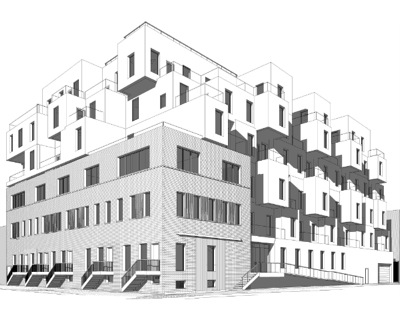South Williamsburg gets a dark-horse entry in the race to be the next tower on the waterfront in the ground. Though South Williamsburg is still a big long shot to beat out Greenpoint – in addition to getting a deal done, the site is occupied by Cine-Magic under what is apparently a long term lease.
Eliot Spitzer in Talks for Kedem Winery Site
Where Will That Williamsburg Apple Store Finally End Up?
Racked assumes that there will be an Apple store, but gets the owner of Kings’ old space to g on record that it won’t be there.
Dusting Off the Williamsburg Apple Store Rumor
As with Starbucks, if you repeat the Apple-store-is-coming-to-Williamsburg rumor often enough, someday it will come true.
Was the Bagel Store (and Corcoran, and the natural food store, and the vintage clothing store, and the pet food store) space warehoused to create a large retail space when Kings left? Absolutely. Will something big go there? Almost certainly. Will it be a high-end, national retailer? Ditto. Will it be an Apple store? Who knows? Anyone who does is tied down by a NDA three-inches thick. No matter what some random guy said to a clerk at a kitchen store a year ago, I tend to think not. Maybe he was just putting up a smoke screen for the inevitable Williams-Sonoma…
Short-term vs. Long-term Affordability
The affordable units, of which 20 percent [about 18 units] will be permanently affordable, will be distributed to people earning between $23,000 to $105,000 per year.
Big change from 0% affordable, so kudos to Antonio for working that deal. But how long will the other 27 “affordable” units be affordable?
Williamsburg Gets a Boozy Starbucks
After almost 20 years of existential angst over the prospect of a Starbucks on Bedford Avenue, the Northside is finally getting its own chain coffee store. And in true Williamsburg 3.0 fashion, it will serve alcohol. Seems appropriate that the neighborhood’s first Starbucks is going into a former Superfund site, and that its coffee will be extra high octane.
Diesel is the Next Big Chain Coming to Williamsburg
Commenter #2 (AndyG) stole my line.
Greenpoint Eberhard Faber Building in Contract
After a failed attempt at residential conversion, 74 Kent Street is in contract and likely to become commercial offices. More good news for a real mixed-use community.
Revealed: 79 Quay Street
Wow – this will be something (and another something from Cayuga). The nondescript one-story warehouse on Quay Street will be demolished, and the only slightly more descript building at the corner of Quay and West will be retained.
It really does seem like the Greenpoint waterfront is about to become something very different.

Nearly 60,000 People Apply for 105 Affordable Units in Greenpoint Building
Good example of the need for affordable housing and the incredible inefficiencies in supplying it. If history holds, in a few months they will be scrambling to find eligible tenants to fill some of the affordable slots.
Cayuga Developing Offices at 87 Wythe
Commercial development that is not hotels and not bars or bowling alleys seems to be becoming viable in the Bushwick Inlet IBZ.
[via NY Yimby]
